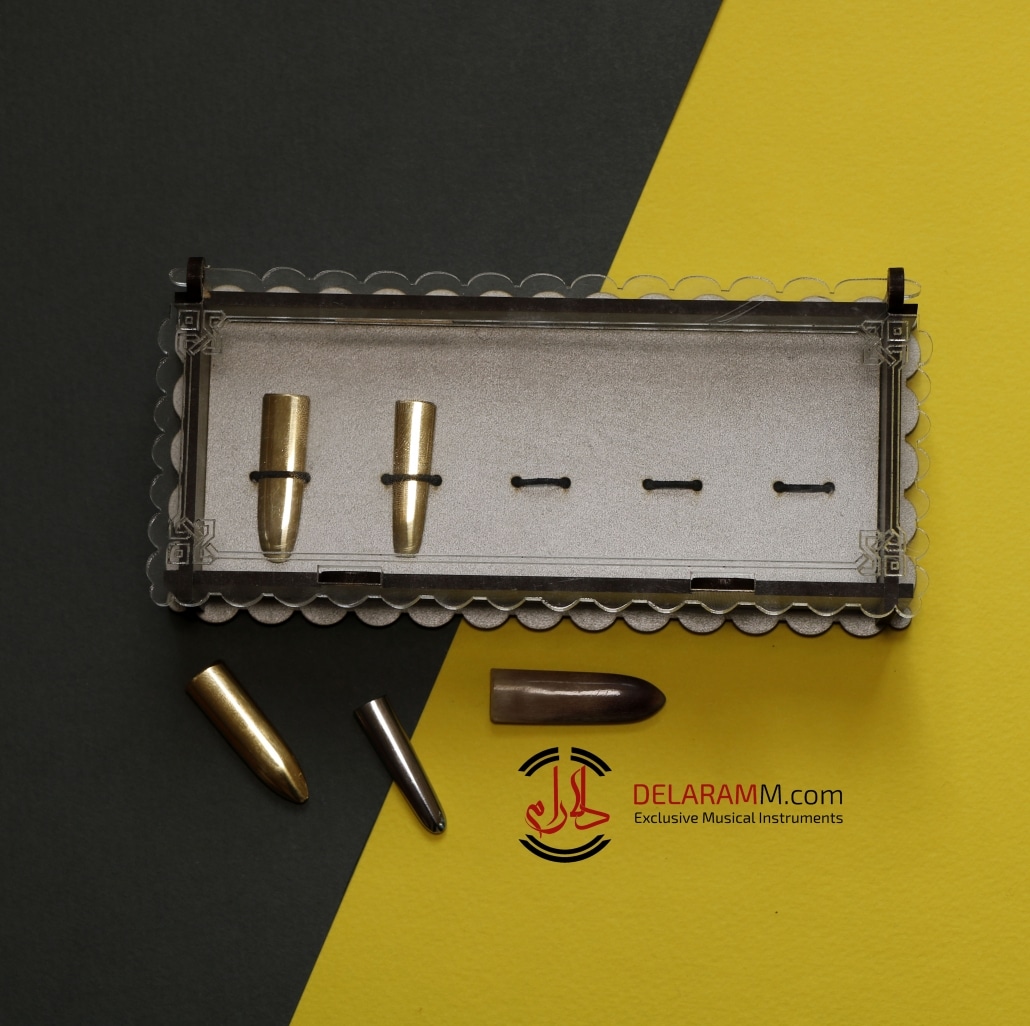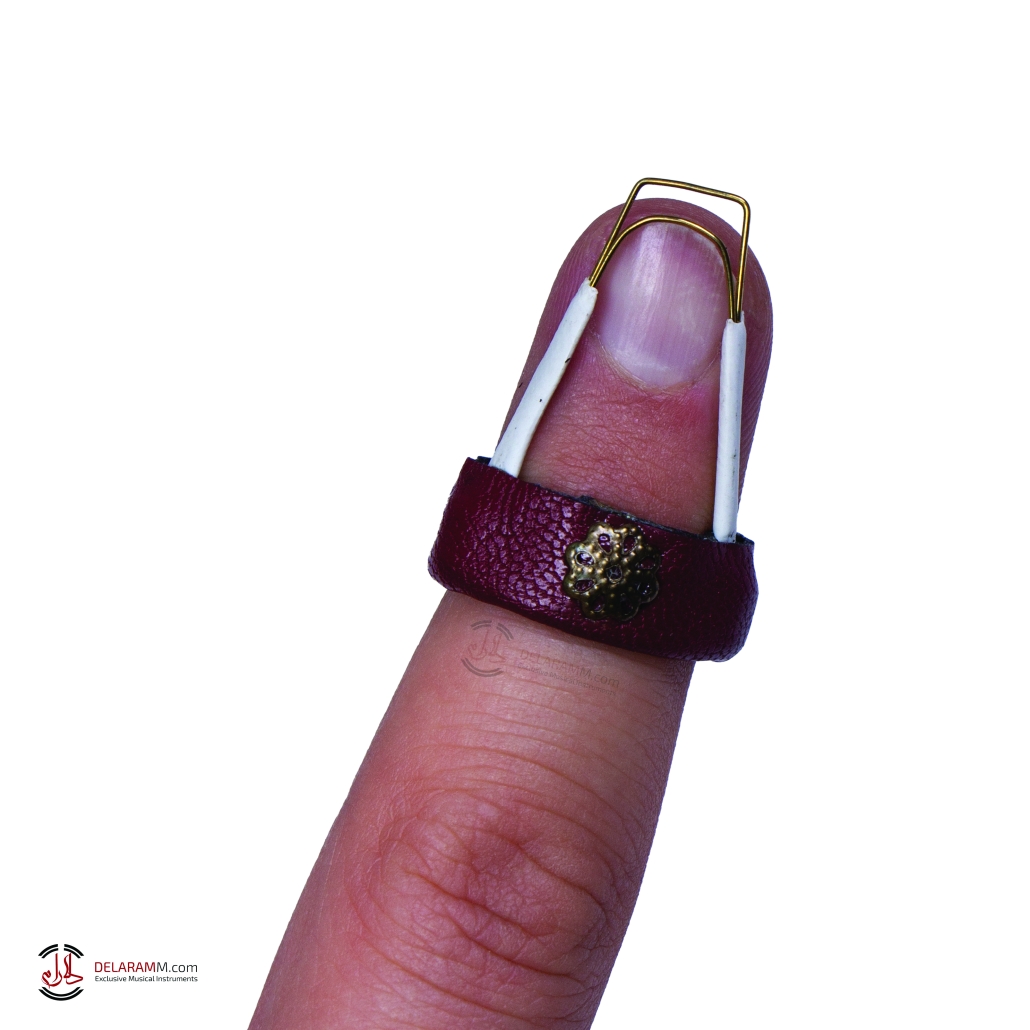The Mezrab Explained: A Guide to the Persian Instrument’s Key Accessory
Introduction: The Importance of Mezrab
Music has always been a big part of many cultures, showing us their history, traditions, and special events. Among the many musical tools we have, the mezrab is a unique one. This tool is very special in places like the Middle East and South Asia. Musicians use the mezrab with stringed instruments like the sitar, tar, and setar. It has helped musicians make music for a very long time.
Origins and Historical Significance
The mezrab, often made of metal or bone, is a finger pick used by musicians to strike the strings of instruments, thereby producing sound. The term ‘mezrab’ is derived from the Persian language, where it means ‘plectrum’. Its origins can be traced back to the ancient Persian and Indian civilizations, where it played a significant role in musical performances.
Historical scriptures and carvings show evidence of mezrab’s usage, particularly in royal courts and spiritual gatherings. Over time, the design of the mezrab has evolved, with variations reflecting the nuances of different musical traditions. For example, while the mezrab used for the sitar in India is typically larger and worn on the index finger, the mezrab for the setar in Iran is generally smaller and fits on the player’s thumb.
Craftsmanship and Varieties
The Mezrab typically has a slender, elongated shape, designed to be held between the thumb and forefinger of the player’s right hand. The tip of the Mezrab is used to pluck the strings of the instrument, creating the distinctive sound that defines Persian music. Depending on the style of music and the instrument being played, Mezrabs can vary in thickness and length.
Materials Used in Mezrab Construction
| Material | Characteristics | Usage |
|---|---|---|
| Wood | Lightweight, natural feel, warmer tones | Traditional Tar and Setar performance |
| Bone | Harder, more rigid, produces sharper tones | Common in classical Persian music |
| Plastic | Durable, consistent, suitable for modern use | Often used in modern Mezrabs |
Making a mezrab is an art in itself. Traditional craftsmen meticulously design these plectrums, ensuring they are both functional and aesthetically appealing. The primary materials used include metal (often brass or steel), bone, and sometimes even wood.
There are different kinds of mezrab, each tailored to a specific instrument:
- The Tar is a traditional Persian string instrument played with a Mezrab, producing rich, dynamic tones in classical Persian music.
- The Setar, a smaller version of the Tar, is also played with a Mezrab to produce its delicate and melodic sound in Persian classical performances.
- The Rubab, an ancient Persian instrument, is occasionally played with a Mezrab, contributing to its distinct sound in classical and folk music.
- The Tambur, primarily used in Persian and Central Asian music, is played with a Mezrab, offering a deep, resonant tone in Sufi and folk traditions.
- The Santur, although usually played with mallets, can also be plucked with a Mezrab in some Persian music performances to create intricate tones.
- The Ghichak, a traditional Persian stringed instrument, is commonly played with a Mezrab, producing a high-pitched sound in folk and classical music.
- The Barbat, an ancestor of the Oud, is sometimes played with a Mezrab in Persian music, producing a rich, melodic tone.
How to Purchase a Mezrab from Delaramm.com
For enthusiasts looking to delve into the mesmerizing world of stringed instruments, possessing a high-quality mezrab is crucial. And what better place to procure this essential tool than from Delaramm.com?
Easy Navigation: Our website boasts a user-friendly interface. Simply head to the ‘Instruments & Accessories’ section, and under the sub-category of ‘Mezrab’, you’ll find an array of choices.
Detailed Product Descriptions: Each mezrab is listed with a comprehensive description. Whether you’re searching for a specific material, size, or instrument compatibility, all the information you need is at your fingertips.
Secure Payment Methods: We prioritize your security. Our payment gateways are encrypted, ensuring a safe and seamless transaction process.
Prompt Delivery: Once your order is placed, our team ensures that your mezrab reaches you in pristine condition and in the shortest time possible.
Customer Support: Should you have any queries or need guidance on your purchase, our dedicated customer service team is always ready to assist.
Mezrab: A Closer Look at Its Structure
Materials and Design: The primary composition of a mezrab varies based on its intended use and regional influences. While metal variants, primarily crafted from brass or steel, offer durability and a sharp tonal quality, bone and wooden mezrabs provide a mellower sound, adding a distinctive texture to the musical notes. The design, although seemingly simple, is tailored to fit comfortably on a musician’s finger or thumb, allowing for hours of unhindered play.
Ergonomics: The mezrab is not just about producing sound; it’s also about the comfort of the musician. It’s meticulously crafted to suit the curvature of the finger and allow the player to strike the instrument’s strings with precision. The ergonomic design reduces the strain on the fingers, especially during prolonged play.
Aesthetic Embellishments: In some cultures, the mezrab is more than just a functional tool. Artisans often incorporate intricate designs, engravings, and even gemstone inlays, making each mezrab a unique piece of art.
Maintenance and Longevity: Caring for your mezrab is essential for its longevity. Storing it in a dry place, away from direct sunlight and extreme temperatures, ensures it remains in prime condition. Regularly cleaning metal mezrabs prevents tarnishing, while wooden and bone ones benefit from occasional oiling to prevent them from becoming brittle.
Mezrab in Contemporary Music
Over time, while the essence of traditional music remains intact, new genres have welcomed the mezrab with open arms. Fusion bands, combining western rock or jazz with eastern melodies, have incorporated instruments like the sitar and tar, requiring the use of a mezrab. This blending of sounds, driven by the humble mezrab, stands as a testament to the universality of music.
Training and Mastery: Using the Mezrab
Beginning the Journey: For novices, it might seem challenging to use the mezrab efficiently. Like any instrument or accessory, it requires patience. Start with basic strokes, focusing on precision rather than speed.
Advanced Techniques: As players become more accustomed to the mezrab, they can explore advanced techniques such as rapid strumming, nuanced plucking, and producing vibrato effects.
Tutorials and Workshops: Many online platforms, including Delaramm.com, offer tutorials and workshops focused on the effective use of the mezrab. Engaging with these resources can significantly enhance one’s playing skills.
The Cultural Significance of Mezrab
In many cultures, the mezrab is more than just an accessory; it holds symbolic significance. In some regions, it represents the bond between the musician and the instrument, serving as an extension of the player’s soul. During traditional ceremonies or spiritual gatherings, the mezrab is seen not just as a tool but as a conduit for expressing deep emotions and connecting with the divine. In some narratives and folklore, it’s even been personified, attributing to it emotions and tales of its own. This deep-rooted cultural connection elevates the mezrab from a mere musical accessory to an artifact of profound importance.
Conclusion: The Symphony of Tradition and Modernity
The mezrab, a testament to ancient musical traditions, continues to be an integral part of contemporary music scenes, bridging the past with the present. Whether you’re a seasoned musician or an enthusiastic beginner, understanding and owning the right mezrab can significantly enhance your musical journey. And with platforms like Delaramm.com, acquiring this piece of history has never been easier. Dive into the world of mesmerizing melodies with the right tools in hand.



